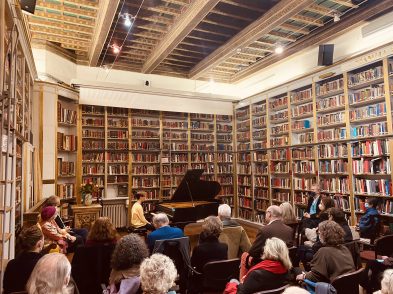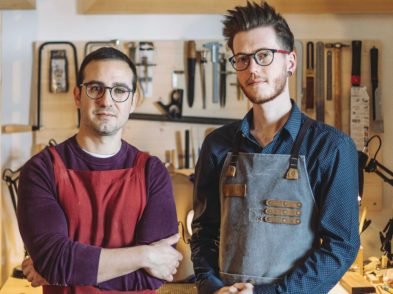Along a street not far from piazza Santa Croce is a terracotta-colored facade adorned by a 19th-century art deco-like glass and metal awning bathed in falling vines. Fail to look up and you will miss the plaque: Grand Theatre Della Pergola. The Opera MACBETH was composed for this theatre by Giuseppe Verdi and premiered there on the 14th of March 1847. On entering for one of the year-round musical and theatrical experiences, the interior resembles the intricate gold setting of a precious gem, the storefront facade suggesting nothing of the sort. Marble columns adorned by white and gold stuccos and filigree, mirrors and grand staircases, crystal chandeliers and monumental romantic canvases. When one enters the auditorium through passageways guarded by plush curtains, expect to be overwhelmed by the grandeur of the red and gold vision.
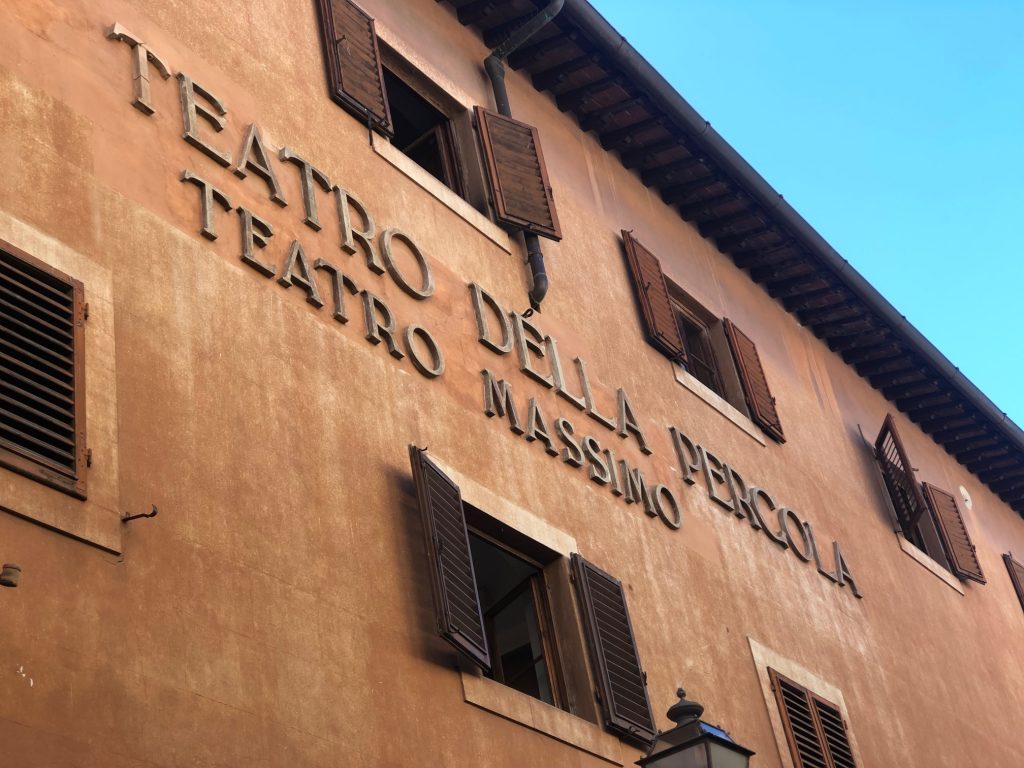
Stepping onto the stage offers a whole other level of history and magic. With floorboards dating to the building’s creation in 1656, each creak tells the story of one of Italy’s oldest theatres, where superstars have performed for centuries and composers such as Cherubini, Donizetti, Mascagni and, of course, Verdi gave opera premieres. Eleonora Duse had her own dressing room, still there on stage left. Looking out at the auditorium from centre stage, one is greeted by an intimate platea, parterre seating of some 600 seats, with horseshoe levels rising and separated boxes for individual viewing bringing the total house to a little over 1,000 places. There are two legends as to why the boxes were created in this way—only the second box seating of its kind in all of Italy, if not the world. Patrons would sometimes wish to eat during the performance and they could do so within these confines. Local legend instead suggests that the boxes were crafted as such because Florentine families were known to fight and yell at one another. With separated boxes at the theatre, at least for the duration of the performance, the fighting would have to stop. Reasonable enough.
But it is stage right that one again realizes the genius, innovation and forward-thinking mentality of Florentines. On a thick column is a mechanism, above which there is a dedication to “Meucci”. This is the first “telephone”, which was invented and put into use in Teatro della Pergola in 1834 by the stage manager Antonio Meucci to reach various parts of the theatre with instructions regarding moving sets, candles and lighting, actors, musicians, and general stage business. Even though Alexander Graham Bell is “credited” with inventing the telephone, a footnote that ought to be much larger than it is, declares Meucci to be the true inventor of the mechanism, so much so that the issue was brought before United States Congress. Bell maintains his title, but Meucci is also credited. Today’s Teatro della Pergola is arguably the city’s finest producing and presenting theatre.
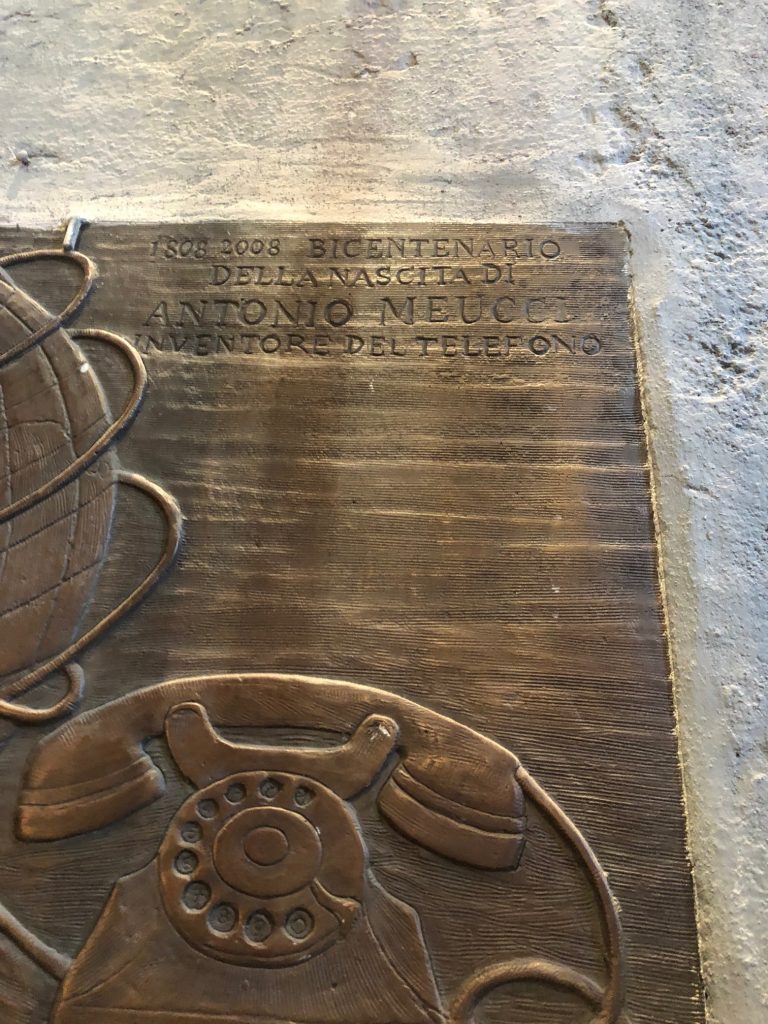
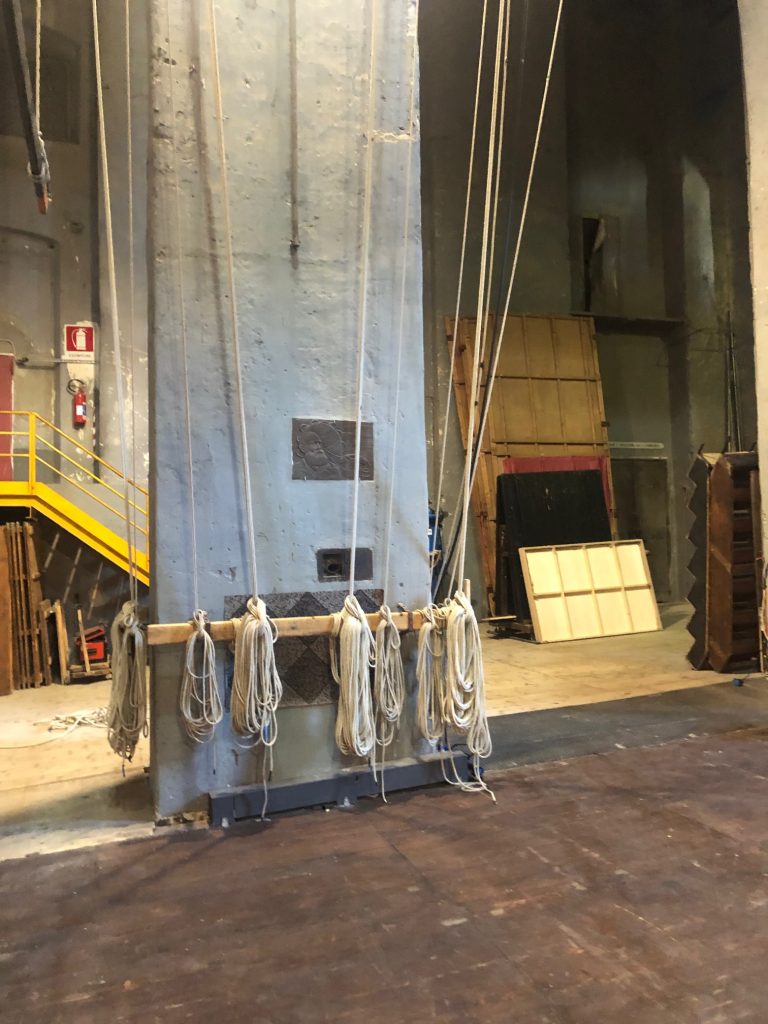
When leaving Teatro della Pergola, we make our way through the palace-laden winding streets to piazza del Duomo. As grand as the Duomo is, there is something about it that has you feeling that you can wrap it up in a small package, put it in your pocket, and take it with you wherever you go. It strikes me that Florence has that sensibility: the grandest of humanity, but always unfailingly human. Facing the Duomo, halfway down to the left is via Ricasoli. You would never know it if it wasn’t pointed out, but there at the tip of the street is an arched entranceway that leads into a cafe. Above the arch are the words “Teatro Niccolini”. As one enters beyond the cafe and storefront bookshop, which is owned and operated by the theatre’s current owners, the Pagliai family, one is greeted by a grand marble staircase in the style of a 17th-century palace. Curtained passages hide the awe-inspiring beauty of a horseshoe theatre, taller than it is wide, in absolutely perfect condition, having been meticulously restored to its original mid-17th-century glory. Standing at the top level looking down upon the stage, one can literally hear a pin drop, so exquisitely crafted is the acoustic of what turns out to be the oldest theatre in Italy, constructed specifically for prose and the dramatic arts. Over the years the theatre has welcomed leading Italian talents, and even Ingmar Bergman had productions presented there. Nowadays, the theatre has but a few theatrical and musical events, and functions as a study space, but plans are in the works to bring the theatre fully back to life as a producing entity for Italian residents and tourists alike.
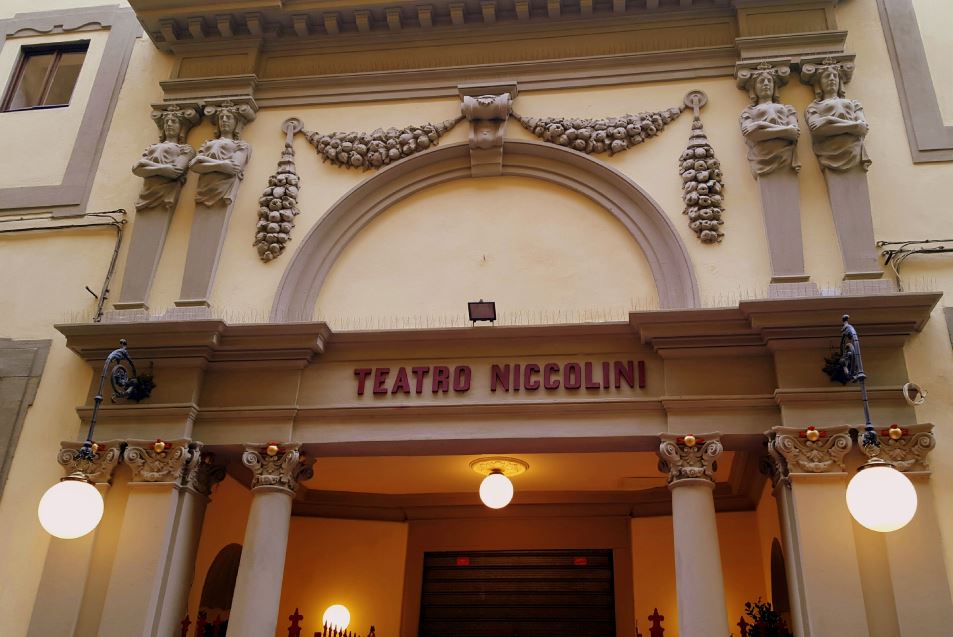
Another interesting tidbit about Niccolini is that it was built six years prior to Teatro della Pergola, as a test-building. What a luxury that must have been: to test a model for a theatre by building a full theatre as the model! We are the beneficiaries of this largesse and have a responsibility to fill the spaces with worthy productions that will entice the Italian and international public, so that cultural consumers will find a thriving scene in Florence that still oddly remains in the nascent stages. It is interesting that a city so culturally attuned to fine art has been somewhat stagnant in the presentation of popular performance art for a broad public. Which is not to say one must present generic material, but that it is integral to present a vast swathe of unusual and interesting material that might interest patrons of various tastes on any given day. The good news is that there is a broad canvas upon which to paint and there are edifices ready and able to handle the work.
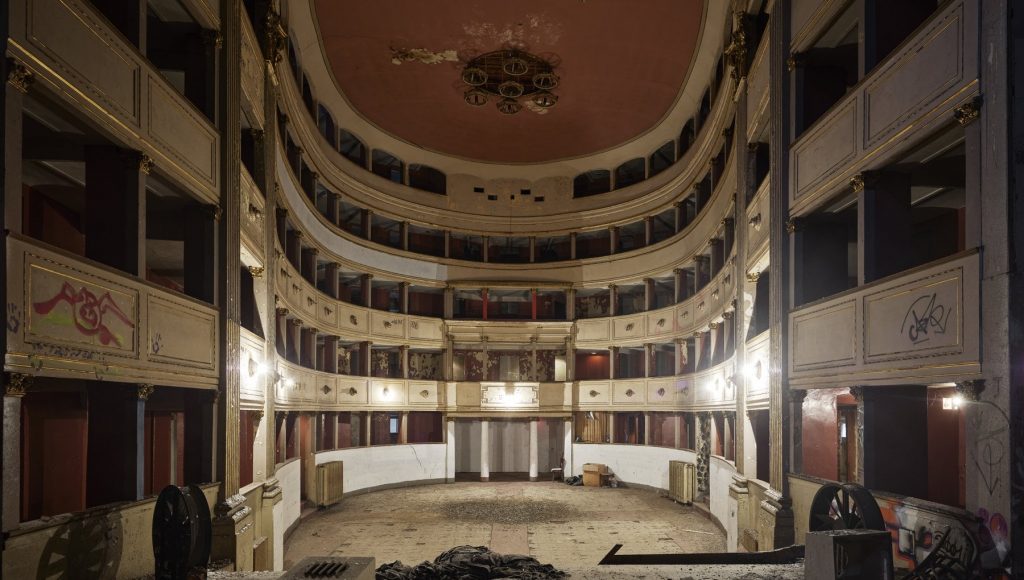
And then there is the Teatro Nazionale, just off piazza della Signoria. In total disrepair, a complete restoration was recently undertaken by the architect Marco Casamonti and Studio Archea. The theatre has a storied past: initially as a hospice, a theatre famous for oration (when Florence was annexed to the Kingdom of Italy, it became a stage for great comedies), a cinema, and a theatre again before being left derelict. Several years back, a real estate developer had floated the idea of turning it into a hotel and spa. (An internet search even shows plans featuring a pool on what was once the stage.) Thankfully, Casamonti entered the picture and made saving the theatre a priority. One can only be grateful for the “build it and they will come” mentality, as the idea of losing any of these historic gems would be a shame indeed.
Teatro della Pergola is central to Florence’s cultural activity when it comes to theatre and musical performances. There is also Maggio Musicale and various other organizations of course, but it is the theatres in the city centre that have the potential of becoming the beating heart and pulsating arteries of a live performance world. Imagine if one came to Florence not only to experience the finest of art, architecture, opera and classical music, fine dining and street food, but also for international theatre and performance art of the highest quality on these historic stages, entertaining the 30,000-plus tourists that come through our magical city each and every day. I look forward to having a hand in developing this exciting prospect.



